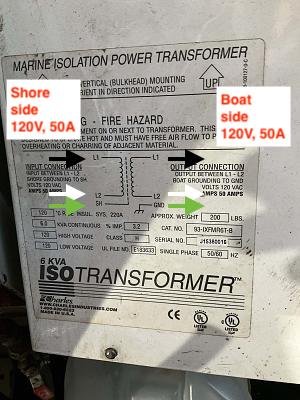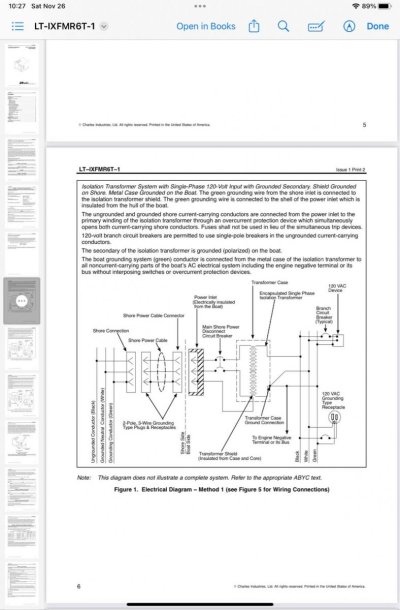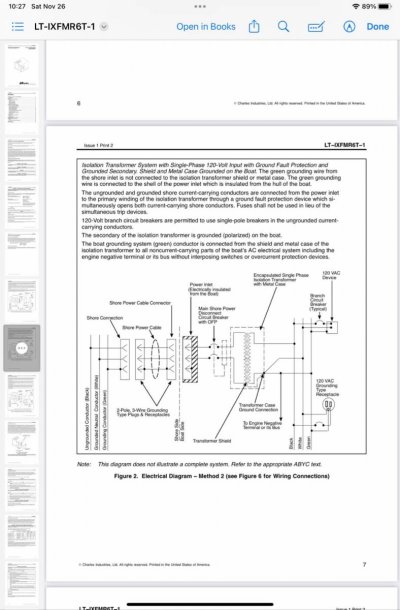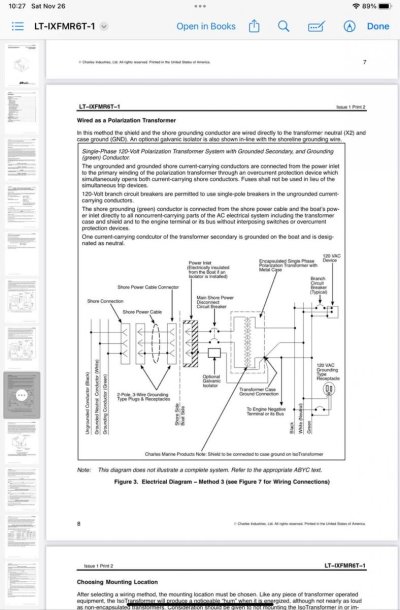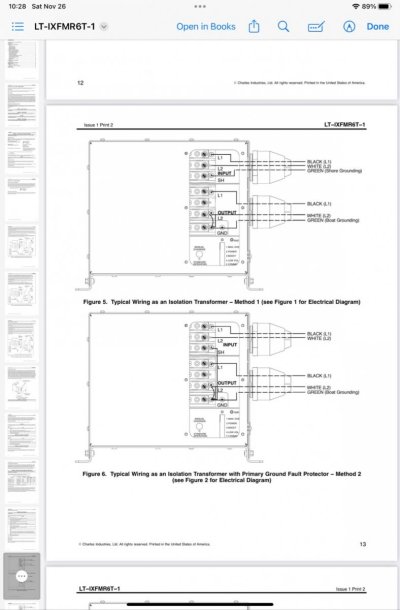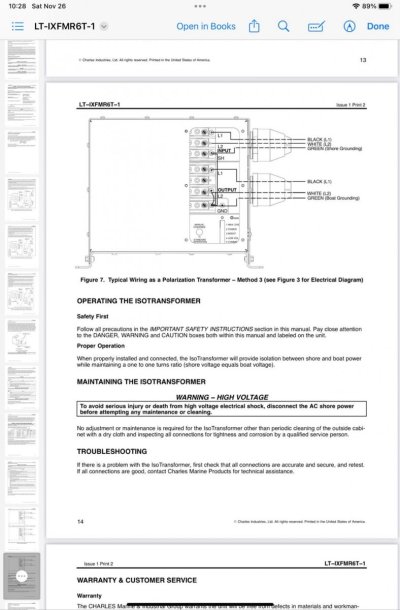tiltrider1
Guru
- Joined
- Aug 2, 2017
- Messages
- 4,351
- Location
- Pacific North West
- Vessel Name
- AZZURRA
- Vessel Make
- Ocean Alexander 54
It looks like (from the label) your current Isolation Transformer's Input is limited to 120V, and single phase.
If so, it will not work with 240V split phase supply, nor will it produce 240V split phase.
Your quickest remedy remains a separate 120V 30A supply from the other pedestal that you keep entirely separate from the existing boat wiring. New inlet, breakers, wiring, buses, branch circuits breakers and branch circuits as usual. Use it at a current draw of no more than 24A if the load is for more than about a minute.
I read the transformer as L1 and L2. 120v each leg. Which would give you 240 for a 220 appliance.

